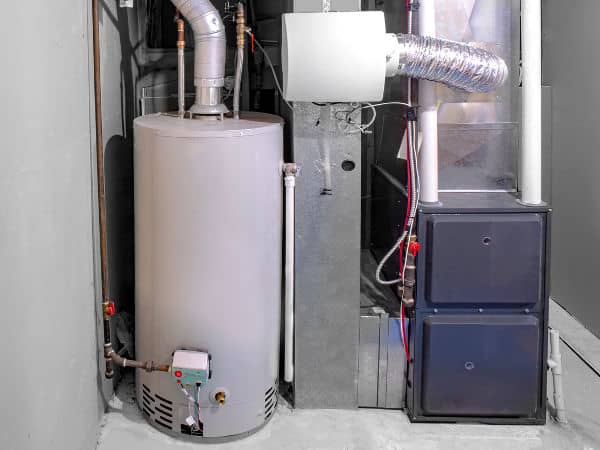Steps on How to Care for Your Home's Hot Water System Effectively
Steps on How to Care for Your Home's Hot Water System Effectively
Blog Article
We've noticed the article relating to Tips For Maintaining Your Hot Water Heater directly below on the net and concluded it made sense to quickly share it with you on this site.

Hot water is crucial for day-to-day comfort, whether it's for a refreshing shower or washing recipes. To ensure your warm water system runs efficiently and lasts longer, normal upkeep is essential. This short article supplies practical suggestions and understandings on how to maintain your home's warm water system to stay clear of interruptions and pricey repairs.
Introduction
Keeping your home's warm water system might seem overwhelming, however with a couple of simple steps, you can ensure it runs efficiently for several years to come. This overview covers everything from understanding your hot water system to DIY upkeep pointers and knowing when to hire expert help.
Significance of Preserving Your Warm Water System
Normal upkeep not only extends the life expectancy of your warm water system but also ensures it operates effectively. Ignoring upkeep can cause decreased effectiveness, higher energy expenses, and even premature failure of the system.
Indications Your Hot Water System Requirements Upkeep
Knowing when your hot water system needs attention can prevent major problems. Watch out for indications such as irregular water temperature level, unusual sounds from the heating system, or corroded water.
Flushing the Hot Water Heater
Flushing your hot water heater gets rid of debris accumulation, enhancing effectiveness and extending its life.
Checking and Replacing Anode Rods
Anode rods prevent corrosion inside the storage tank. Checking and changing them when worn out is essential.
Complex Issues Requiring Specialist Help
Examples consist of significant leaks, electrical problems, or if your hot water heater is continually underperforming.
Routine Specialist Upkeep Advantages
Professional upkeep can consist of complete evaluations, tune-ups, and making certain conformity with security standards.
Evaluating and Changing Temperature Setups
Changing the temperature level settings ensures optimum performance and safety.
Do It Yourself Tips for Maintenance
You can perform several upkeep jobs on your own to keep your warm water system in leading condition.
Checking for Leakages
Consistently check pipes and links for leaks, as these can bring about water damage and higher costs.
Comprehending Your Hot Water System
Prior to diving into upkeep tasks, it's practical to understand the standard elements of your warm water system. Usually, this consists of the water heater itself, pipelines, anode rods, and temperature controls.
Month-to-month Maintenance Tasks
Routine monthly checks can assist capture minor concerns prior to they escalate.
Checking Pressure Relief Valves
Examining the pressure safety valve guarantees it works correctly and protects against excessive pressure build-up.
Insulating Pipelines
Shielding hot water pipelines minimizes warmth loss and can save power.
When to Call a Professional
While DIY upkeep is beneficial, some problems need professional experience.
Final thought
Regular upkeep of your home's warm water system is essential for performance, long life, and expense savings. By adhering to these suggestions and knowing when to seek expert aid, you can make sure a reliable supply of hot water without unforeseen disturbances.
How to Maintain an Instant Hot Water Heater
Before tinkering with your hot water heater, make sure that it’s not powered on. You also have to turn off the main circuit breaker and shut off the main gas line to prevent accidents. Also turn off the water valves connected to your unit to prevent water from flowing into and out of the appliance. 2. When you’re done, you have to detach the purge valves’ caps. These look like the letter “T†and are situated on either side of the water valves. Doing so will release any pressure that has accumulated inside the valves while at the same time avoid hot water from shooting out and burning your skin. 3. When the purge valves’ caps are removed, you have to connect your hosing lines to the valves. Your unit should have come with three hoses but if it didn’t, you can purchase these things from any hardware or home repair shops. You can also get them from retail stores that sell water heating systems. Read the user’s manual and follow it to complete this task properly. When the hosing lines are connected, open the purge port’s valves. 4. You should never use harsh chemical cleaners or solutions when cleaning your unit. Make use of white vinegar instead. It should be undiluted and you’ll probably use about 2 gallons. 5. Now flush your water heater. This task should probably take about 40 minutes. We can’t give you specific directions for this because the procedure is carried out depending on the type, model and brand of your heater. With that being said, refer to the user’s manual. 6. When you’re done draining the unit, you have to turn off the purge port valves again. Remove the hosing lines that you earlier installed on each of the water valves. Put the valve caps (purge port) back in their respective places and be very careful so as not to damage the rubber discs that are found inside these caps. 7. Now that everything’s back in place, check your user’s manual again to find out how to reactivate your water heating system. 8. Once it is working, turn one of your hot water faucets on just to let air pass through the heater’s water supply pipes. Leave the tap on until water flows smoothly out of it. https://www.orrplumbing.com/blog/2014/september/how-to-maintain-an-instant-hot-water-heater/

I'm very interested by Tips on Maintaining a Water Heater and I am praying you liked the blog entry. If you enjoyed our page if you please be sure to pass it around. I am grateful for your time. Kindly stop by our blog back soon.
Check It Out Report this page